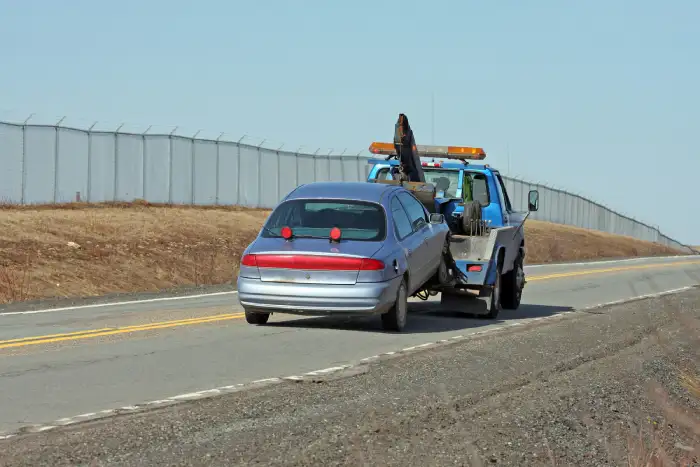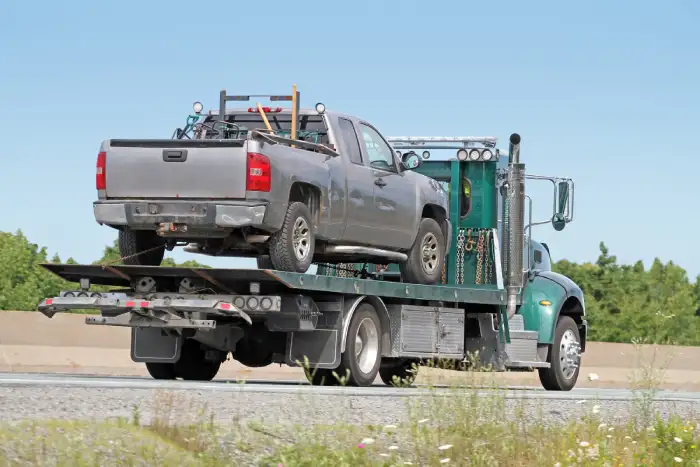Tow trucks are essential vehicles that play a crucial role in transportation. They are used to move vehicles that have broken down, been involved in accidents, or are illegally parked.
These trucks come in different sizes and capacities, each designed to handle specific tasks. Understanding how tow trucks work is crucial for anyone who operates or works with them.
Tow trucks work by securing brackets between a car’s wheels and securing the vehicle safely to the towing truck. The process of towing a vehicle involves connecting the tow truck to the disabled vehicle, lifting it off the ground, and transporting it to the desired location.
It is a basic concept, but tow truck components are strong and reliable due to their materials and strength. Today we will explore the different types of towing trucks and their working process, as well as the weight limits and safety considerations that come with towing.
Different Tow Trucks and Their Working Procedures

There are many tow trucks, and each has its way of working and is suitable for different vehicles.
#1 Rollback or Flatbed Tow trucks
Flatbed or Rollback towing trucks have a flat-topped free bed that utilizes hydraulics to shift the bed up or down vertically. This allows vehicles to be easily loaded onto it.
They’re perfect for transporting cars that can’t be towed by a traditional tow truck because they’re designed to transport vehicles on top of their flatbeds.
The process of loading a vehicle onto a flatbed tow truck is simple. The operator will simply put their flatbed on the ground and drive the vehicle on top of it. Once the vehicle is in position, the operator will use chains and a winch to haul the car onto the towing bed.
This towing truck’s powerful hydraulic system then lifts the bed and the vehicle into a secure position behind the cab. Flatbed or Rollback tow trucks are essential for transporting vehicles safely and efficiently, and their use is widespread in the towing industry.
#2 Hook and Chain Tow Trucks
Heavy-duty chain-and-hook tow trucks utilize a heavy-duty hook and chain at the rear to suspend one side of a vehicle in the air. While the other side’s wheels remain on the ground, allowing it to be dragged behind the truck during transportation.
Typically, these tow trucks are used to tow junked vehicles that can’t be driven or to transport stuff that can’t be loaded onto a flatbed. The hook and chain are attached to the front or rear of the vehicle being towed, and the suspended side is lifted and secured to the tow truck’s hook.
While this method of towing is effective for certain types of vehicles and cargo, it has some limitations. The suspended side of the vehicle can sustain damage from bouncing or scraping against the road. Also, the towed vehicle can pose a hazard to other drivers if it detaches from the tow truck.
This towing method is also unsuitable for all vehicles. Some vehicles can’t be towed with hook and chain because of their design or construction.
#3 Integrated Tow Trucks
Incorporated tow trucks are heavy-duty vehicles designed to transport large and heavy objects. An integrated wheel lift, boom, and extra axle provide better stability and strength when hauling incredibly heavy and large vehicles.
The arms of an integrated tow truck are installed in its core to give it even more stability. These towing trucks are specifically designed to handle the demands of heavy-duty towing. This makes it ideal for transporting oversized vehicles such as buses and semi-trucks.
Also, the added stability of the extra axle and integrated design ensures that the tow truck can safely transport even the heaviest loads.
#4 Wheel Lift Tow Trucks
Utilizing a metal yoke and a hydraulic lift, a wheel-lifting towing truck lifts one end of a vehicle off the ground. Before dragging the other wheels behind the truck, the other wheels remain on the road.
The metal yoke secures the vehicle by being placed underneath the front or rear wheels, while the hydraulic lift partially elevates the vehicle in the air behind the tow truck.
This method of towing is more efficient and less damaging than the traditional hook-and-chain method. It does not rely on chains and can be used on a wider range of vehicles.
Also, wheel lift tow trucks are easier to maneuver and can be used to tow vehicles in tight spaces. But note that this method can cause some damage to the vehicle’s suspension and tires if not used correctly.
How much weight can a tow truck handle?

The weight capacity of a tow truck is determined by its classification. This includes:
- Light-duty trucks capable of towing up to 11,000 lbs,
- Medium-duty trucks able to handle loads up to 17,000 lbs, and
- Heavy-duty trucks can tow loads greater than 17,000 lbs.
This weight-hauling capacity of a tow truck is considered by various factors, including:
- Strength of its chassis,
- Power of its engine,
- Size of its tires, and
- The capacity of its transmission.
Also, tow trucks are equipped with various tools and equipment to ensure the safe and efficient towing of vehicles.
A tow truck’s weight hauling capacity is important in determining its ability to tow various vehicles and whether the tow truck operator and the vehicle being towed will be safe.
Tow Trucks for Transportation: Choosing the Right Truck for Safety
Tow trucks are versatile vehicles designed to transport other vehicles from one location to another. Different tow trucks are used for various purposes, including flatbed, hook and chain towing, and wheel lift tow trucks.
Each tow truck has its unique working procedure, but all function to transport vehicles safely and efficiently. A tow truck’s weight-carrying capacity depends on the tow truck’s specific type and capabilities.
Tow trucks play a crucial role in the transportation industry, and their efficient working procedures have made them an indispensable asset. Choosing the right tow truck for the job is crucial to ensuring the safety of the towed vehicle and the tow truck driver.
